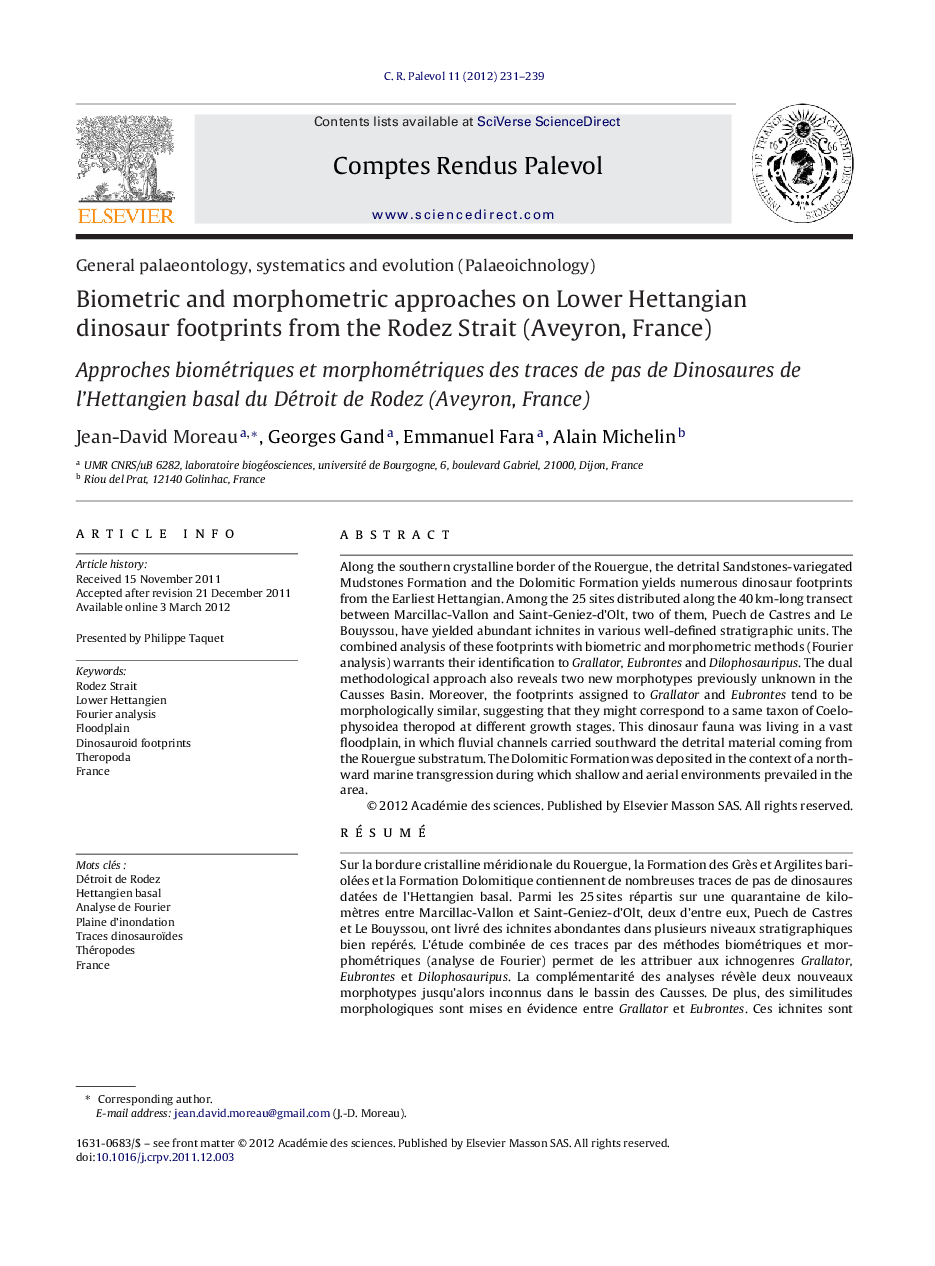| Article ID | Journal | Published Year | Pages | File Type |
|---|---|---|---|---|
| 4745867 | Comptes Rendus Palevol | 2012 | 9 Pages |
Along the southern crystalline border of the Rouergue, the detrital Sandstones-variegated Mudstones Formation and the Dolomitic Formation yields numerous dinosaur footprints from the Earliest Hettangian. Among the 25 sites distributed along the 40 km-long transect between Marcillac-Vallon and Saint-Geniez-d’Olt, two of them, Puech de Castres and Le Bouyssou, have yielded abundant ichnites in various well-defined stratigraphic units. The combined analysis of these footprints with biometric and morphometric methods (Fourier analysis) warrants their identification to Grallator, Eubrontes and Dilophosauripus. The dual methodological approach also reveals two new morphotypes previously unknown in the Causses Basin. Moreover, the footprints assigned to Grallator and Eubrontes tend to be morphologically similar, suggesting that they might correspond to a same taxon of Coelophysoidea theropod at different growth stages. This dinosaur fauna was living in a vast floodplain, in which fluvial channels carried southward the detrital material coming from the Rouergue substratum. The Dolomitic Formation was deposited in the context of a northward marine transgression during which shallow and aerial environments prevailed in the area.
RésuméSur la bordure cristalline méridionale du Rouergue, la Formation des Grès et Argilites bariolées et la Formation Dolomitique contiennent de nombreuses traces de pas de dinosaures datées de l’Hettangien basal. Parmi les 25 sites répartis sur une quarantaine de kilomètres entre Marcillac-Vallon et Saint-Geniez-d’Olt, deux d’entre eux, Puech de Castres et Le Bouyssou, ont livré des ichnites abondantes dans plusieurs niveaux stratigraphiques bien repérés. L’étude combinée de ces traces par des méthodes biométriques et morphométriques (analyse de Fourier) permet de les attribuer aux ichnogenres Grallator, Eubrontes et Dilophosauripus. La complémentarité des analyses révèle deux nouveaux morphotypes jusqu’alors inconnus dans le bassin des Causses. De plus, des similitudes morphologiques sont mises en évidence entre Grallator et Eubrontes. Ces ichnites sont attribuées à des théropodes Coelophysoidea et pourraient représenter un même taxon à différents stades de croissance. La faune dinosauriennne à l’origine de ces traces évoluait dans une plaine d’inondation parcourue par un réseau fluviatile transportant vers le sud des matériaux détritiques issus de l’érosion proximale du socle du Rouergue, en marge de la transgression marine provenant du sud.
